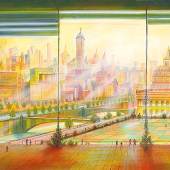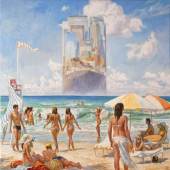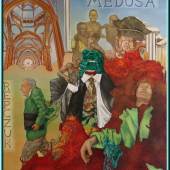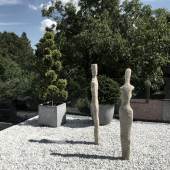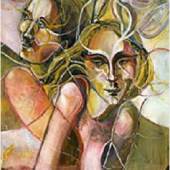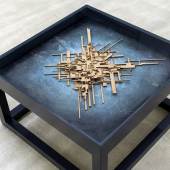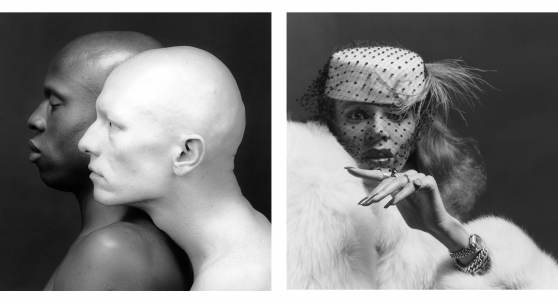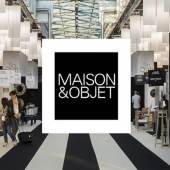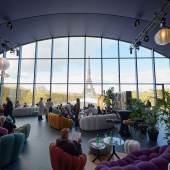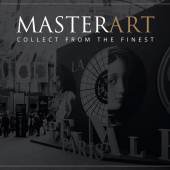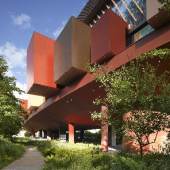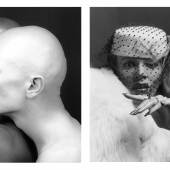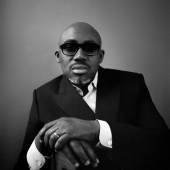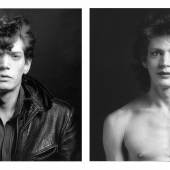Ropac Marais
Robert Mapplethorpe curated by Edward Enninful
-
Ausstellung02.03.2024 - 06.04.2024
Robert Mapplethorpe wanted to disrupt the idea of what a portrait is. And I’ve always wanted to disrupt the idea of what fashion is – what people consider as beautiful or not has always been fascinating to me.
— Edward Enninful
For this exhibition of works by American artist Robert Mapplethorpe (1946–1989) at Thaddaeus Ropac Paris Marais, the gallery invites Ghanaian-born British editor Edward Enninful OBE to collaborate with the Robert Mapplethorpe Foundation to present his singular vision of the photographer’s work. Enninful, Global Creative and Cultural Advisor of Vogue, was given carte blanche to explore the full archives of the Robert Mapplethorpe Foundation. In the exhibition, he presents his selection of 46 prints in pairs, forging new dialogues between them and inviting visitors to see even some of Mapplethorpe’s best-known photographs anew. With this unprecedented curatorial approach to the photographer’s work, as Michael Ward Stout, president of the Robert Mapplethorpe Foundation, says: ‘Edward has made a unique contribution to Mapplethorpe’s legacy’.
As an editor, Enninful is used to seeing in double page spreads. He explains: ‘I am used to images fighting or working together, tension and opposites, or harmony. Things that people don’t expect to go together, finding a sense of serenity within the chaotic.’ While the pairs of works often confront each other, many are marked by a sense of associative formal play. Shapes and silhouettes explored in one photograph appear in unexpected ways in its companion work. Arnold Schwarzenegger’s muscular form – almost armour-like – is echoed in the exaggerated puffed sleeves of a high fashion outfit, which embodies another kind of armour. In another pair, spread fingers highly defined against a dark background emerge as ribs brought out through careful lighting on a nude torso.
The exhibition spans Mapplethorpe’s fashion photography as well as stark portraits, nudes and still lifes. By capturing unexpected subjects with a classical formality, Mapplethorpe defied prevailing aesthetic standards, paving the way for unconventional beauty to be appreciated as art. Enninful is known for making models who don’t fit the white, sample-size norm a non-negotiable on the pages of Vogue around the world, and his work, like Mapplethorpe’s, has represented a challenge to discriminatory aesthetic ideals. In several of the pairings on view, Enninful juxtaposes a subject who conforms to traditional beauty standards alongside one who diverges from them. Through Mapplethorpe’s lens, these visual dialogues prompt viewers to transcend dichotomous thinking and to engage with the questioning of aesthetic norms that was central to Mapplethorpe’s practice: questions which remain relevant to this day.
Enninful pairs two photographs of Lisa Lyon, Mapplethorpe’s favourite female model. In one, she wears a wedding dress, and in the other, she is nude, exuding sensuality and strength as she flexes her biceps: a powerful exploration of the Madonna/whore dichotomy against which women are still measured today. An unassuming, dressed-down Rae Dawn Chong smiling at the camera is hung next to Grace Jones, painted head-to-toe by Keith Haring: the epitome of what Enninful explains as the ‘angry Black woman stereotype’. This pairing serves as a reminder of how Black women who diverge from societal expectations face being considered ‘other’. In one self-portrait, Mapplethorpe portrays himself as, in Enninful’s words, ‘the archetype of desirable masculinity’: wearing a leather jacket with a slight scowl. In the neighbouring self-portrait, Mapplethorpe’s eyes and lips are defined with a touch of make-up. Through these juxtapositions, Enninful prompts the viewer to reconsider ingrained stereotypes and acknowledge the beauty to be found in both normative and non-normative self-presentations, building a narrative within the pairings about identities in the process of becoming.
For me, everything has to be about storytelling. And that’s why the pairings in this exhibition are so interesting to me - it’s like the passage of time and life, where nothing is black and white. — Edward Enninful
Enninful first discovered Mapplethorpe’s work in the early 1990s through the artist’s Black Book, a potent photographic study of Black men which was met with controversy but resonated with Enninful. The first quality he was drawn to was the photographer’s use of light. This comes through in his curation, which plays with contrasts of light and dark: facial features defined by gradations of light and shadow, contrasts of skin tones or of clothed and unclothed bodies, arrangements of wildflowers defined by directional lighting and juxtapositions of dark and light backgrounds. By bringing together contrasting works, Enninful gives the exhibition a sense of visual harmony, in which light is balanced by dark: a reminder to the visitor of the interconnectedness of seemingly opposing forces. Across the exhibition, it is this balance of confrontation and resonance, of juxtaposition and harmony, that characterises the ensemble of Enninful’s approach to Mapplethorpe.
-
09.09.2021 - 13.09.2021The upcoming edition of Maison&Objet Paris will take place from the 9th to the 13th of...
-
08.11.2023 - 12.11.2023Paris Photo, the leading international fair dedicated to photography, announces its premiere line...
-
13.09.2019 - 17.09.2019La Biennale Paris 2019 will be held at the Grand Palais from 13 to 17 September 2019,...
-
02.03.2024 - 06.04.2024
Tuesday—Saturday, 10am—6pm.
